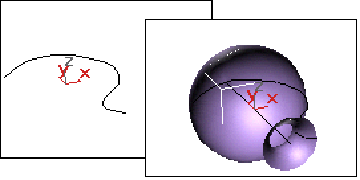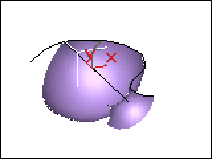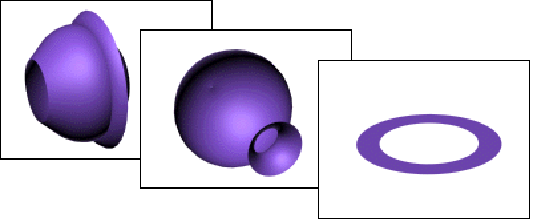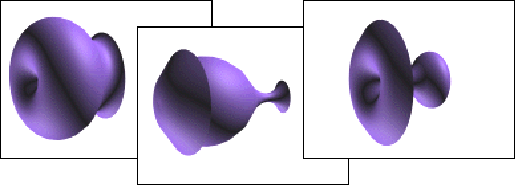


A lathe surface is generated from a curve sub-object. It is similar to a surface created with the Lathe modifier. The advantage is that a lathe sub-object is part of the NURBS model, so you can use it to construct other curve and surface sub-objects.

Surface created by lathing a curve
When you turn on the Lathe button, or while a lathe sub-object is selected, a rollout with the lathe parameters appears.
Degrees: Sets the angle of rotation. At 360 degrees (the default), the surface completely surrounds the axis. At lower values, the surface is a partial rotation.

A partial lathe
Direction: Click X, Y, or Z to choose the axis of rotation. Default = Y.

X, Y, and Z rotations of the same curve
Align: Positions the axis of rotation relative to the curve. Click Min (the default) to locate the lathe axis at the curve’s negative local X-axis boundary. Click Center to locate the lathe axis at the curve’s center. Click Max to locate the lathe axis at the curve’s positive local X-axis boundary.

Min, Center, and Max lathes of the same curve (Y-axis)
The lathe surface rotates about the NURBS model’s local Y axis. The initial lathe amount is 360 degrees. A gizmo (yellow by default) indicates the axis of the lathetransforming the lathe surface’s gizmo changes the shape of the lathe, and lets you lathe around an axis that isn’t aligned with a local coordinate axis.